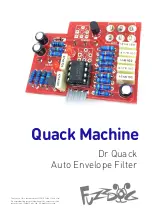
SERIAL CARD 2000-RS
Jumpers
The serial communications card 2000-RS
works most often with the factory set
jumpers: no termination. But if the RS-485
bus is long (>50 m), the last device on the
bus should be terminated.
If there is no devices giving the small voltage
between the lines when no-one is
transmitting, calling fail-safe, this device can
be jumpered to do that. Most usually the
master of the bus provides the fail-safe
voltage.
Connections
An RS-232 or RS-485 can
be connected, but not both.
This card can be installed in
slot B or C, but only one
card is allowed.
The RS-485 bus consists of two data lines
and a common line. In the cable, the data
lines should be a twisted pair. The more
positive line at idle at terminal 6 is commonly
, D1, A, or B. Correspondingly the
negative line at terminal 5 is called -, D0, B,
or A. The common wire is connected in
terminal 4. The shield of the cable should be
earthed at one point only.
Configuration menu
Mode
Protocol selection. Only SCL is available.
Baud
Baud rate 300, 600, 1200, 2400, 4800, 9600,
or 19200 bit/s.
Addr
Serial bus address 0-123. If there are many
devices on the same bus, every one must be
set to a different address.
In addition to the selected address, this
device will always respond in address 126.
This is useful if the address of this device is
23
6
5
4
3
2
1
D1+
R
S
-4
85
R
S
-2
32
D0-
TxD
Com
RxD
Com
J3
No termination, no fail-safe.
Middle of the bus devices.
Terminated, no fail-safe. The last
device on the bus.
Terminated and fail-safed. The
last device on the bus if there is
no other device providing the fail-
safe
D1+
Common
TxD
Common
D0-
RxD
Master
Slot A
Slot B
Slot C
Ser
*+^
>
^
v
Mode
Baud
Addr
>
^
v







































